Today’s songs
Today is the 6th evening of Hanukkah. The lyrics for The Latke Song (Mrs. Maccabeus) were written in 1951 by the late Ben Aronin (1904-1980.) He was a lawyer and scholar, as well as a teacher at Chicago’s Anshe Emet synagogue and counselor at Camp Maccabee in Pelican Lake, Wisconsin. Those last two roles earned him the honorary title of “Uncle Ben”. He wrote many Jewish-themed songs and plays, as well as children’s books in both English and Hebrew.
Do you recognize the melody? It is the same hora dance tune as the famous Khanike oy Khanike that I featured in this series on the first evening of Hanukkah, Nov 28.
The recording is from Cindy Paley’s self-published 1988 album Chanukah: A Singing Celebration. She has served since 1977 as the Music Educator at Valley Beth Shalom, a Conservative synagogue in Encino, California. In that time she has recorded nine children’s albums, with songs in English, Yiddish and Hebrew, all focused on music related to Jewish culture, heritage and religion.
Is it Hanukah or Chanukah? Is performed here by Ruby and Ava Locknar, who were 11 and 9 years old at the time. According to their mother:
They love anything to do with singing, dancing, acting and total world domination. They are not fond of: bed making; piano practicing; mushrooms; and cheek pinching from their relatives during the holidays.
According to Ruby and Ava:
Our favorite Hanukkah memory is a few years ago when our parents had us come downstairs to our basement and our dad had built us a small stage! There’s a mirror on the wall (cause we love to dance), a karaoke machine (cause we love to sing) and he even put up this big curtain for a dressing room! We were so excited and we pretty much use it all the time.
The song is from Christine Lavin’s 2010 singer/songwriter sampler album Just One Angel. I think it may have been written and recorded especially for that album. (A lot of new songs have debuted on Christine’s music samplers, which are designed to showcase singer-songwriters’ talents. Christine herself is a highly regarded New York based songwriter and a patron of that craft. The lyrics and music were written by Ruby and Ava’s mother, the professional songwriter Victoria Shaw, with Teri Simon and Lisa Silver. The lyrics are available here.
Essay: The origin of today’s Hanukkah [word count 2437]
By the nineteenth century, celebration of Hanukkah was in decline especially in North America. Unlike the Jewish High Holidays that were rooted in biblical origins in the Tanakh (AKA, Hebrew Bible), Hanukkah is traditional but it is not an important holiday festival. In fact, one Jewish author says that the Talmud categorizes it as an “unofficial holiday” and another says it is “one of the two least important festivals in the Jewish religious calendar” (the other one being Purim.)
Over the centuries, Jewish peoples’ celebration of Hanukkah’s eight days was already in decline in Europe even before a rush of Jewish emigrants moved to America and into its “melting pot” of cultural assimilation. A holiday whose format was quite suitable for farmers and self-employed townspeople, whose work schedules were dictated by the lengths of daytime, was becoming challenging for the mostly-poor Jewish immigrants who laboured long hours in sweatshops, factories, or other workplaces, often for non-Jewish bosses.
In the 19th century, many rabbis and other Jewish leaders were very concerned about both a severe decline in devotion to the Judaic religion, and cultural assimilation of Jews. This coincided with another major change in America that nominally had nothing to do with Jewish people – a campaign to “keep Christmas.” The 19th and early 20th century reinvention of Christmas into a major child-focussed secular holiday marked by joyful celebration and lavish gift-giving was seen as a real threat to Judaism. Jewish teachers and mothers, in particular, became very concerned about the attraction that this Christian holiday had for their children.
To understand this threat I need to explain the “keep Christmas” movement. It is unfortunate that I have tell about this now, before I have had an opportunity to tell more about the evolution of pagan celebration of midwinter. But, the story about Christmas’ relatively recent transformation is necessary to understand the recent evolution of Hanukkah, and the Festival of Lights’ place on the calendar cannot be delayed for my storytelling convenience. I have to adapt to its timetable.
The history of celebrating Christmas is long and complicated. I will go into that story as briefly as I can this year to show how it relates to the revitalization and change in focus for Hanukkah. Please understand that in telling the parallel story about Christmas’ transformation I am not in any way suggesting that Hanukkah is like ”Jewish Christmas,” or an imitation Christmas.
The birth of Jesus is only scantily covered in the Christian Bible, and the date of that birth is not given. When Christianity was expanding during the dying days of the Roman Empire Church authorities chose to assign it to a date that coincided with the Winter Solstice festivities. They piggy-backed it onto ancient pagan festivities which they were unable to suppress. Hence, Saturnalia, Sol Invictus, and the feast day for the then-popular Mithras, became Christ’s birthday, and many of the strongly-entrenched joyous traditions could continue unabated.
One reason for establishing a birth date for Christ was that they wanted to draw attention to his birth because of an internal Catholic dispute about Jesus’ nature: Was he God, human, or both? For the Catholic Church, the only theologically-correct answer was that He was both. So highlighting a miraculous birth undercut the heretics who advocated either of the other two choices.
Church officials continued this approach centuries later in medieval times as they Christianized Northern European pagans. The celebration of Christmas really got a boost when conversion of goddess-based Celtic religions spurred a cult in devotion (not worship!) to Jesus’ mother, and nothing can show how close she was to her divine Son than the story of when she birthed him.
But the holiday suffered a severe setback in what would become English-speaking countries after Puritan hardliners won the English Civil War. They were well aware that the holiday was based more on pagan than biblical origins, and took the not-unreasonable viewpoint that if God wanted the day to be celebrated He would have included the date in His bible.
In 1647, the English Parliament under Oliver Cromwell banned not just the celebration of Christmas but any observation of the day at all. Businesses were not allowed to close on that day, and churches could not hold services, unless it occurred on a Sunday. Puritans in New England enacted a similar ban in 1659.
This proved to be an “own goal” by the Christian hardliners. They should have learned the lesson from the Romans and the early Catholic Church – it is hard or impossible to extinguish popular culture by fiat. When the prohibitions were enacted many devout people would go along with it, but others would rebel. They would also lose confidence in religious and governmental leadership.
During the official bans, and for several years after they were repealed, good law-abiding people quietly went about their usual daily business. They did not attribute any religious meaning to the day. They also discontinued the old secular customs they associated with Christmastide, including those that promoted community-mindedness, generosity to the poor, and joyfulness.
But the old customs from the pagan core of the holiday season that had been somewhat Christianized during medieval times continued to be widely celebrated, both by usually law-abiding people who did not want to abandon the old customs, and by ne’er-do-wells. The laws became unenforceable and eventually were rescinded but the damage had been done. Christmas Day and the old Christmas season became devoid of religious meaning or moral purpose. Over the next century-and-a-half, celebrating Christmas came associated with boisterous drunkenness and licentious behavior.
By the early 1800s, in both England and English-speaking North America, people decided that something must be done to tone down the rowdy midwinter festivities and return the holiday to having moral purpose. The “keep Christmas” movement was born and began to blossom on both sides of the Atlantic Ocean. As far as I can tell, the movement didn’t really have any central organization, but it did have prominent public leaders on both sides of the pond who shared a vision of what kind of celebration they wanted Christmas to be.
No one wanted to return to the bad old days of religious intolerance and divisiveness, so Christmas was to have a flexible but religious core rooted in whatever kind of Christianity individuals practiced. The celebrations were to be focused on temperate home-life, with particular attention paid to making the occasion attractive for children. That included establishing new customs, like festive seasonal decorations in the home, and giving children Christmas gifts.
They wanted a new generation to grow up with a new morally-upright model for celebrating the holiday that would become perpetuated. In England, the most prominent trend-setters included Queen Victoria and Prince Albert. In 1840 they allowed a rare image of their private lives with their children celebrating around a Christmas tree (a custom that Albert brought with him from Germany) to be published. In 1843 Charles Dickens published his famous novella A Christmas Carol, in which the notorious miser and party-pooper Ebenezer Scrooge is won over to the keeping of Christmas.
In America prominent Christmas-keeping role models included several presidents and their families, but the movement’s most effective rout was through literature. In fact, Americans were the first off the mark with that. Well before Dickens wrote his Christmas ghost story Washington Irving published several supposedly factual (but largely fictional) accounts about families in England celebrating Christmas in past years, and about the early days when New York was a Dutch settlement.
In the long term, perhaps most influential of all was a children’s poem published anonymously by a politically conservative New York Episcopal bishop, who was also a professor at the General Theological Seminary. The bishop/professor was Clement Clark Moore, and the poem was called A Visit from St. Nicholas, which is now commonly known as The Night Before Christmas. It was first published in 1823.
The poem became extremely popular at the time but the conservative bishop and theologian did not know what being known as the author of a frivolous children’s poem would do to his professional reputation so he kept his authorship secret. It was only after considerable family pressure to take credit for it that in 1837 he acknowledged that he wrote it.
In the meantime, the Keep Christmas movement was quickly gaining momentum, both in England and in America. New family-based traditions were burgeoning and succeeding in their objective. Children raised with the new customs were passing them along to their friends’ families, and later passed them along to the next generation. But the American seed of a legendary gift-bringer planted by Prof Moore was also beginning to bear fruit.
Moore’s “jolly old elf” benefactor evolved into Santa Claus and became something of an irresistible cultural phenomenon. By the 1860s the newly invented department stores were already beginning to use the character as a marketing tool. The concept of seasonal window displays of gifts was invented. Whole new sectors of children’s game- and toy-making developed, that needed to be marketed. Local bakeries and confectioners invented new seasonal sweets, and displayed them in their windows. Children liked what they saw, and told their parents what they wanted. Our modern concept of what Christmas is like for children had begun.
All this brings us back to Hanukkah and the dilemma that all this wanting posed for Jewish parents, teachers and rabbis. Perhaps they could have just told the children: “No, that stuff is not for us. It’s only for Christian kids.” In retrospect, could that moral high ground and Judaic purity have helped prevent assimilation? I’m not Jewish so I can’t say. But the conclusion that most mid- to late-19th century and early 20th century parents, teachers, rabbis and other community leaders came to was no. They needed to make being Jewish at this time of year just as emotionally satisfying as their children’s perceptions of what it was like to be Christian, or to not being religiously affiliated.
The answer was right before their eyes – the dwindling holiday of Hanukkah. The fact that the holiday was not an important sacred time, bound by complex and ridged Talmudic rules, actually made it more possible for families and Jewish organizations to try new things to their make their culture and Jewish heritage appealing.
One of the first innovations was to stage musical concerts and elaborate spectacle performances depicting the Maccabee uprising against foreign oppression. An Eastern European custom of giving children money during the Festival of Lights to pay their teachers evolved into the many variations of Hanukkah gelt we have today.
One Jewish writer suggests that the fact the festivities were held at home, organized within the family away from rabbinic supervision, may have facilitated experimentation in finding what actually worked to raise kids’ enthusiasm for their distinctive Jewish holidays. If a father doesn’t return home from work until later, perhaps the hanukkiah no longer needs to be lit within a half hour of nightfall as the Torah suggests. Lighting prayers could be respectfully sung, including to modern melodies, not just recited or chanted in the old manner.
Old folk tales emerged in the 1890s, or perhaps new stories were created, about ancient origins of the dreidel game. These stories appear conflict with historic documentation. However some Hanukkah traditions are indeed timeless – the hanukkiah ritual and the fried food thing do go back at least 2000 years. The Eastern European of Hanukkah gelt originally intended train children to help the poor or pay their teacher could be transformed into gold-foil covered chocolate money.
And the gifts. Eight days of Hanukkah compared to one day of Christmas! Parents could be as generous to their children as their pocketbooks let them. The burgeoning popularity of Christmas had been a real threat to cultural assimilation for Jewish people, especially in America's ethnic melting pot. The Jewish people in America did not copy Christmas. They met it with a flexible tradition that was far, far older than the Christian holiday.
This is all documented by Dianne Ashton, a Professor of Religious Studies and editor of the scholarly journal American Jewish History. Her 2013 book, Hanukkah in America: A History (New York University Press, 2013) traces how 19th and 20th century Jewish leaders and parents re-invented the holiday to counter the growing appeal of Christmas for their children. (And, for some, returning the core story to the holiday from the candles’ lights back to the Maccabees’ victory, to support the Zionist vision of re-establishing Jewish settlement in the Holy Land.)
Ashton documents, with extensive footnotes, the debate about this approach, and how Jewish people came to the conclusion that “Jewish life can flourish in America only if Jews find pleasure in Jewish living.” Rabbis, of course, participated in this debate, but it was teachers, community leaders, periodical editors, and especially mothers, who forged new common traditions that included children's songs, dances, feasting, games and gift-giving in addition to the traditional and meaningful candle-lighting ritual. The Hanukkah holiday was repurposed not just to counteract Christmas but to create generations of “new Maccabees” who would take pride in their ancestral heritage and resist cultural assimilation.
The parts in this essay about the history of Christmas come from or are consistent with Stephen Nissenbaum’s equally scholarly book called The Battle for Christmas, published by Alfred A. Knoff in 1996. The book is subtitled “A social and cultural history of Christmas that shows how it was transformed from an unruly carnival season into the quintessential American family holiday.” Dr. Nissenbaum is now Professor Emeritus of History at the University of Massachusetts. His book was a finalist for the 1997 Pulitzer Prize.
These two books complement each other very nicely. As this essay discusses, the celebration of both Christmas and Hanukkah underwent radical changes in parallel with each other in North America, and both reinventions of old holidays have gone international. The reasons for these changes were similar, and for better or worse, both have led to similar outcomes. They both have made religious holidays that were relatively unimportant, theologically speaking, into ones that are extremely popular in their respective religious communities.
Both still have a religious core and represent high-minded values, but also both are now joyous, family-oriented and child-focused occasions. They both have also become predominantly secularized, and in some cases highly commercialized. And in both cases there are devout people who feel that the current ways of celebrating degrade the religious meaning of holy days.
But the two holidays differ in one way: As far as I know, unlike the English and Massachusetts Puritans, no extremist Jewish leaders have ever have insisted that all observation of Hanukkah must be forbidden because possible pagan roots.
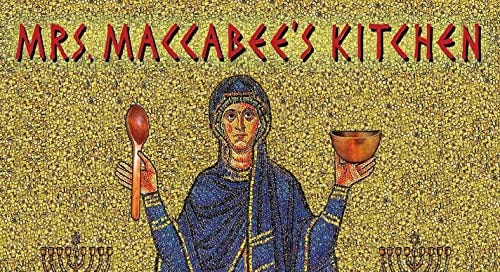




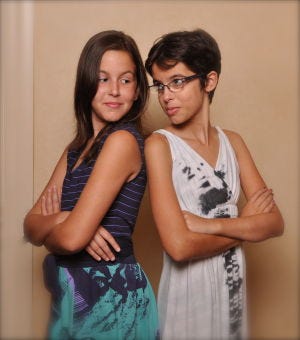

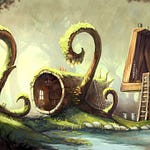


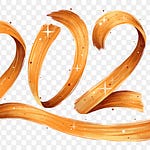

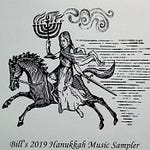
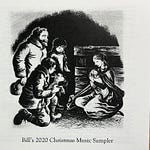

Share this post